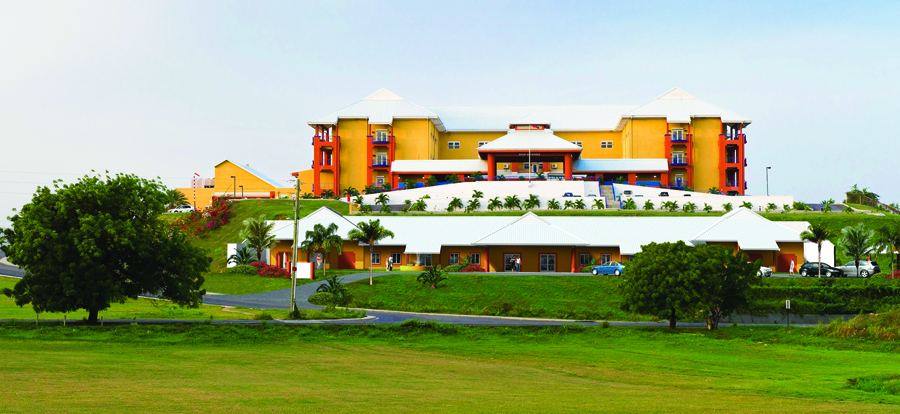By Orville Williams
While the country continues to battle the Covid-19 pandemic, the oncology department at the Mount St John’s Medical Centre (MSJMC) has had its hands full, dealing with an increase in patients seeking help for various cancers.
Following the observation of World Cancer Day on February 4, head of the hospital’s oncology department, Dr Nandan Shanbhag, told Observer that – considering statistics from 2013 up to 2020 – there has been an increase in cancer patients seeking treatment at the facility.
“Definitely, there is a rise in the number of [cancer] cases that we are seeing. [However] I wouldn’t say rise in the objective way; what I would probably say is there must be a bit of awareness that has happened in the last maybe, two or three years, where the population has realised that they can avail themselves of good treatment at the Mount St John’s Medical Centre.
“Chemotherapy [and] targeted therapy are available, and there are doctors and nurses who are quite adept in giving them the treatment that is required, so I think there are more patients trying to avail themselves of help from us,” Dr Shanbhag said.
He added that, “Last year, we saw about 119 cases in the outpatient department, and we did about 2000 treatments, which include chemotherapy [or] systemic therapy in any form. If you look at the year before that, that number was somewhere in the 90s and the year before that, it was about 80.
“So, there has definitely been a gradual increase, I would say about a 10-or-15 to 20 percent rise in the number of cancer incidences that we see in our department.”
Dr Shanbhag also explained that it has been observed globally, where people in developing nations tend to visit the doctor at a later stage in their cancer, rather than seeking help at an earlier stage. This, he said, also applies to patients in Antigua and Barbuda.
“[It happens] in countries like Antigua and Barbuda. Even here, the majority of the patients that we see in our clinics, in our outpatient departments, unfortunately are patients who come at a stage higher than Stage 2 or a Stage 3. We have quite a number of Stage 4 cases – which is the last stage – [and] it is unfortunate that we see [these] cases who could have gotten help earlier, but for some reason decided to go to the doctor at a later stage.”
Three of the top five most common cancers from a global view are breast, colorectal and prostate cancer, and these are also found in the top five most commonly seen at the MSJMC.
Dr Shanbhag disclosed that the situation with prostate cancer is a bit strange, as he would see a large number of cases during his previous work at a private centre in Antigua, but not that many at the hospital.
“Having said that, if you look at the composition, breast cancer takes the number one spot – it is the number one cancer that we see in our clinic – followed by colorectal, that is your gastrointestinal cancer, as well as the gynae cancer.
“So, if you ask me, the top five [cancers] that we see in our clinic here, it is going to be breast, followed by colorectal, then gynae cancer – which includes cervical, endometrial and ovarian cancers – then prostate and finally, hematologic malignancies.”
Bearing these statistics in mind, he encourages the entire population to ensure that early-stage care is sought as urgently as possible, to have the best chance of treating and curing a particular cancer.
“One basic and very important fact is that the earlier we can detect a cancer, the higher the chances of a cure. What we mean by earlier is – for example – if there is a lump in the breast, please don’t wait and sit with it…[or] if you have a history of cancer in the family…please go see a [medical professional], get a mammogram [or other examination] done.”
World Cancer Day – an initiative of the Union for International Cancer Control (UICC) – was recognised on Thursday February 4, under the theme, “I Am and I Will.”

